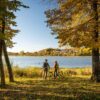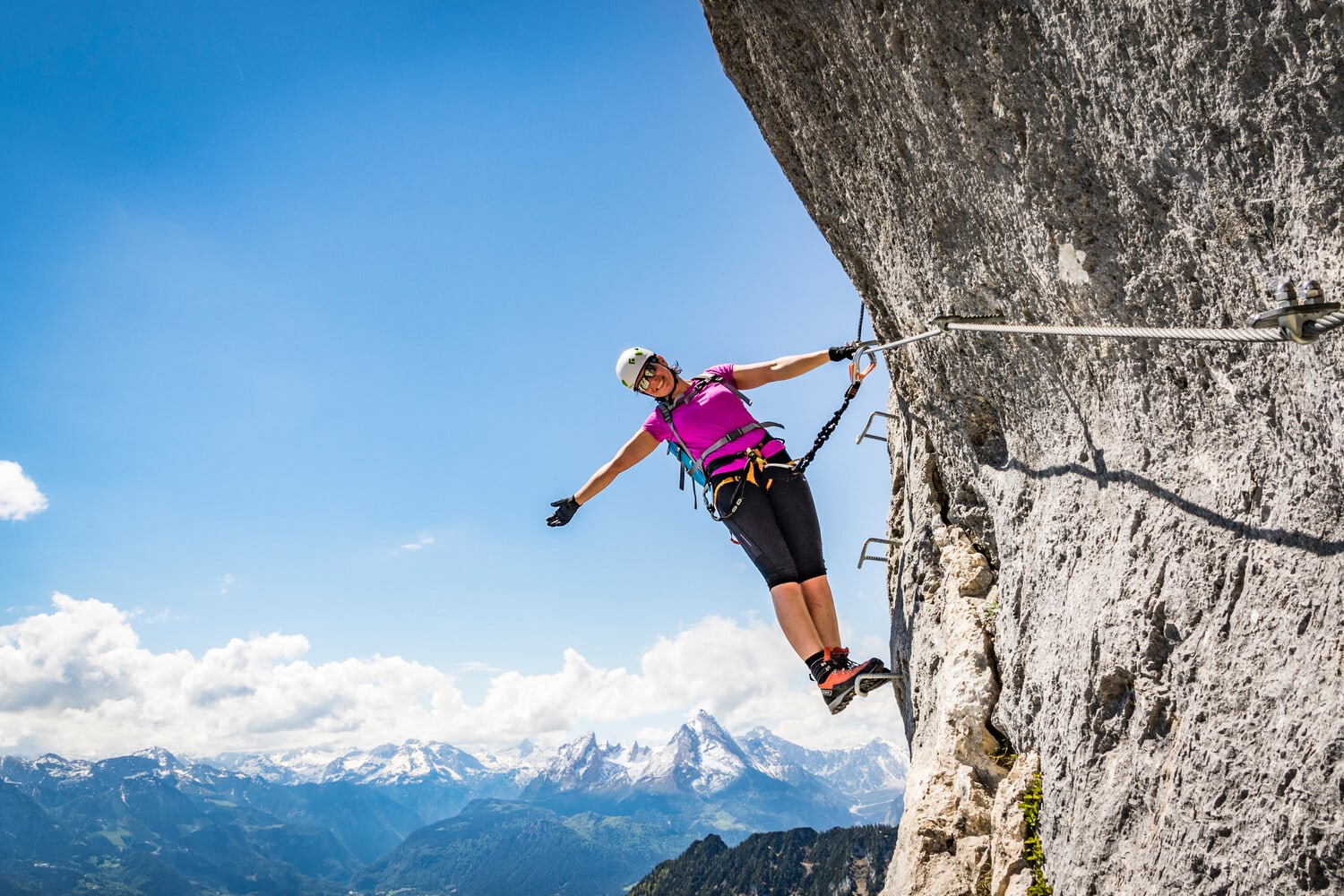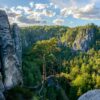Berchtesgaden is a paradise for climbers, whether it’s for beginners or professionals. Because the region offers via ferratas with different levels of difficulty. And anyone who has already climbed one or two via ferratas knows that this sport also enables breathtaking nature experiences.
Berchtesgadener Hochthron via ferrata on the Untersberg
The Hochthron via ferrata leads through the steep, 400-meter-long east face of the Untersberg to the Berchtesgadener Hochthron. At 1,973 meters, this is the highest peak in the Berchtesgaden Alps. The modern sports via ferrata has numerous demanding passages and is quite long and very exhausting. And of course, the route through a high wall also means that you should be free from giddiness. But a super nice view of the Watzmann awaits anyone who makes it all the way.
The ascent takes two to three hours.
Pidinger via ferrata on the Hochstaufen
This 1.00 meter long and demanding via ferrata leads through the northern slopes of the Hochstaufen near Piding and is not suitable for beginners, children or dogs. The via ferrata, which was built in 2003 in 1,500 hours of work, has difficulty level D. Whoever masters this challenge can be really proud of themselves in the end.
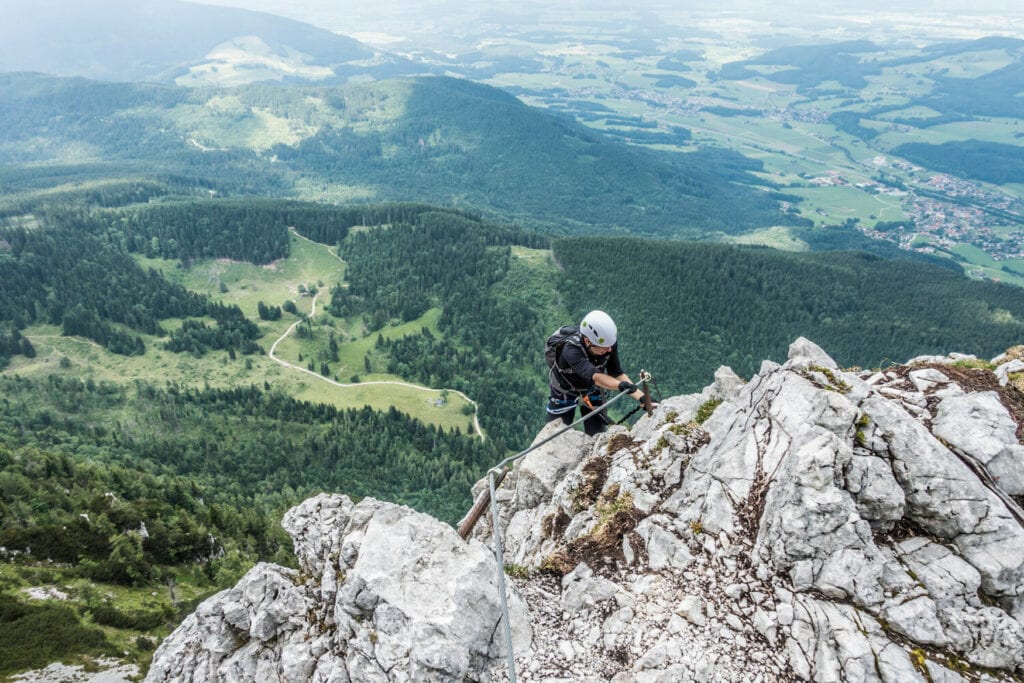
The ascent takes three to four hours.
Grünstein via ferrata
The pop star among the via ferratas in the region is the Grünstein via ferrata at the foot of the Watzmann. Luckily, the modern sports via ferrata has different levels of difficulty from A to E with short walking sections. The way to the Grünstein can be done via three entry options with all the variants being brought together again in the upper area. The crowning glory is the long and somewhat wobbly suspension bridge. Pleasure seekers usually climb to the suspension bridge via the Isidor variant and can watch, parallel to their path, how the climbers stretch their fingers in the difficult variant. The very well laid out climbing facility is a successful mix of a vertical tightrope act and is a scenic delight.
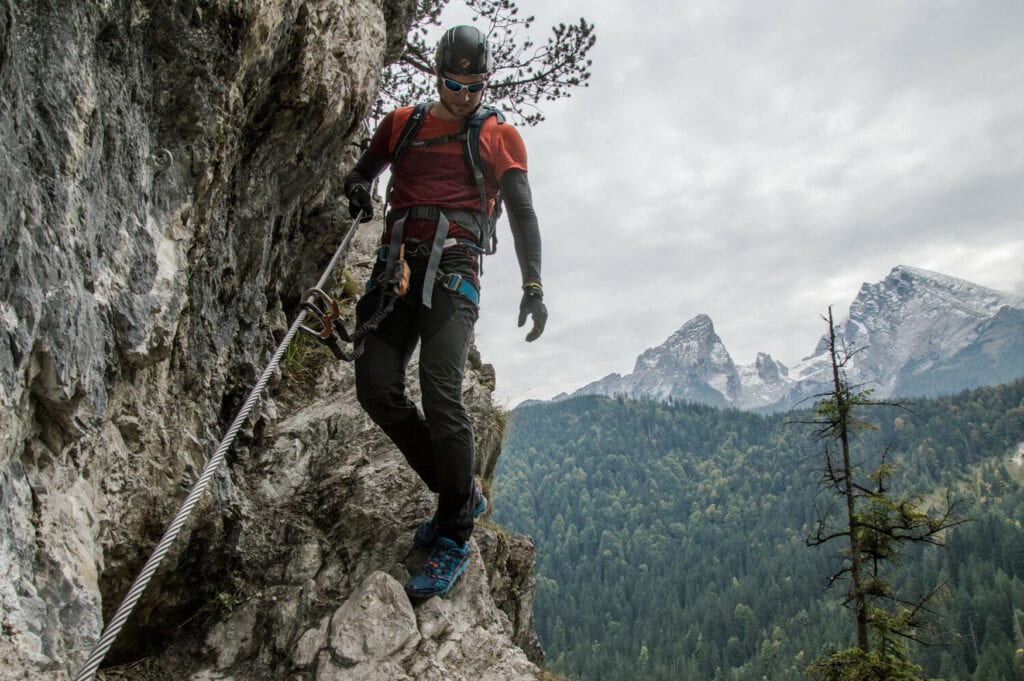
A maximum of three hours is to be expected for each variant.
Family via ferrata on the Jenner – Schützensteig
Be sure to pack your camera, because taking photos is not difficult on this via ferrata. And the view of the Watzmann and the Königssee is phenomenal. It is also a very rewarding via ferrata for beginners. The rocks of the Kleiner Jenner are crossed and slightly uphill, but in between a flying fox and a wooden suspension bridge, there is much variety. At the end of the rather manageable tour, you then climb directly up to the summit cross. Above all, it is a tour that you can do as a family and therefore also as a novice climber. And thanks to the Jenner-Bahn, you can save yourself from a good bit of the steep route.
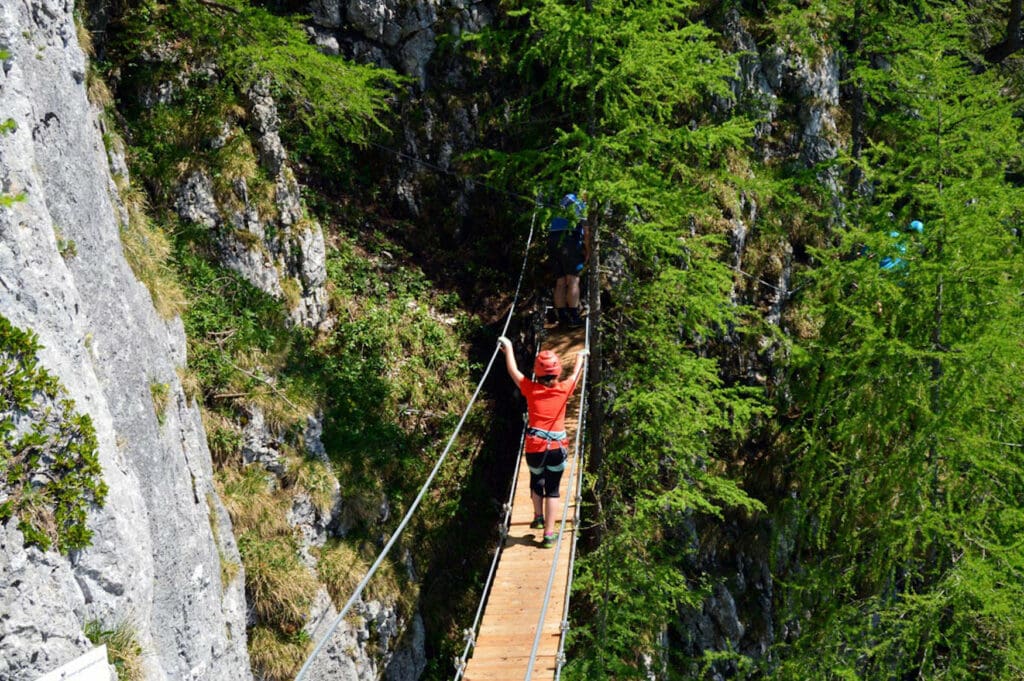
It takes one to one and a half hours to get through.
Laxersteig on the Jenner – the demanding addition to the Schützensteig
The Laxersteig, on the so-called small Jenner, with its consistent level of difficulty C, offers a challenging addition to the Schützensteig for ambitious via ferrata climbers. You have to work harder for the view here than on the family via ferrata. It is also important to remember that neither the via ferrata nor the ascent are pleasant to climb when it is wet. The Laxersteig via ferrata is not recommended for children. Even smaller people will have a harder time on the C passages!
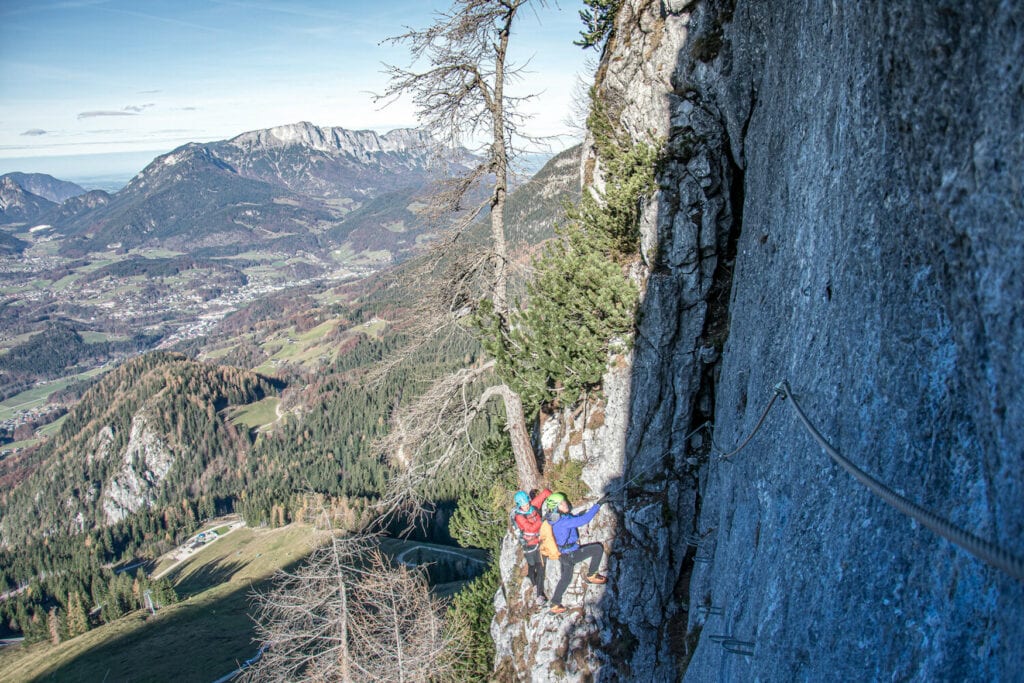
It takes just under an hour to climb the Laxersteig. In combination with the Schützensteig, two to two and a half hours should be calculated.
A high level of strength and stamina is required to climb the via ferrata, in addition to a head for heights. Via ferratas should only be climbed with a standardized via ferrata set including a helmet. If you don’t have any experience yet: the Berchtesgaden mountain and via ferrata schools offer regular courses, information at www.berchtesgaden.de.


